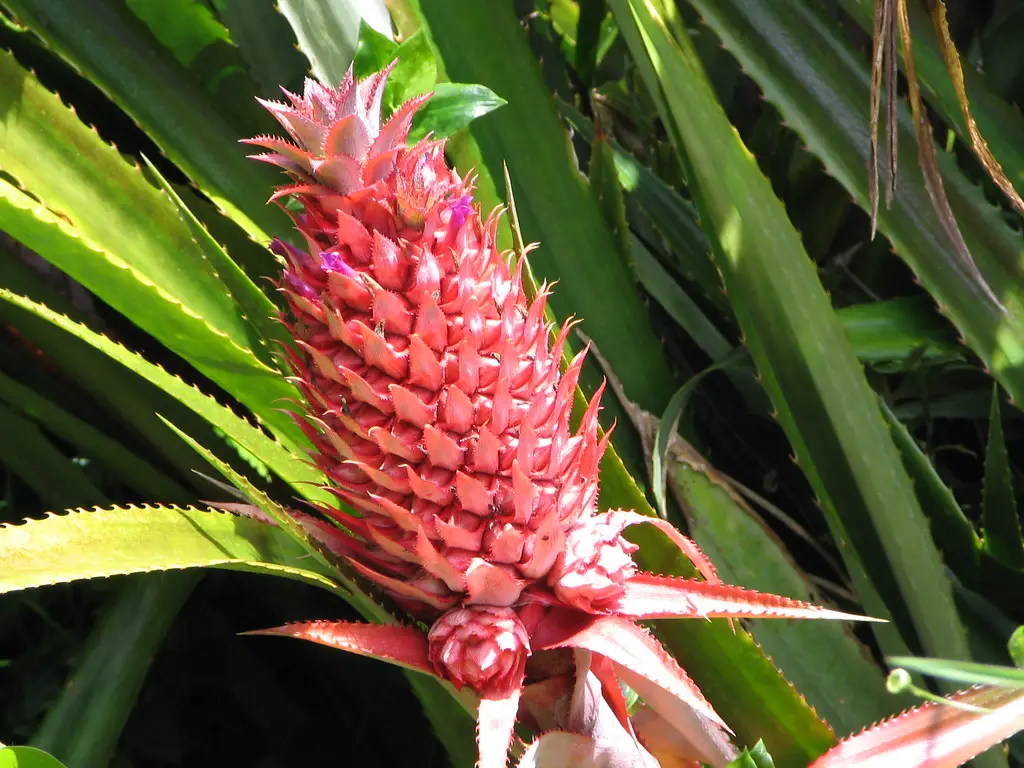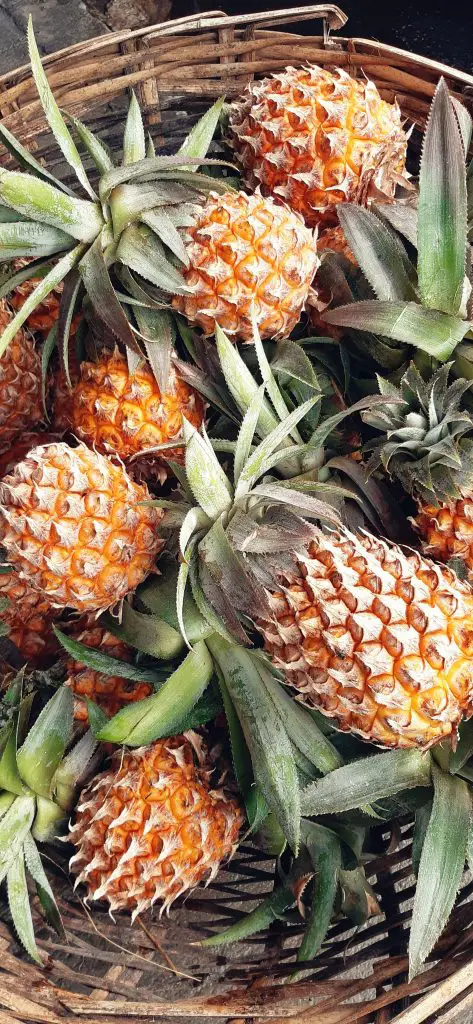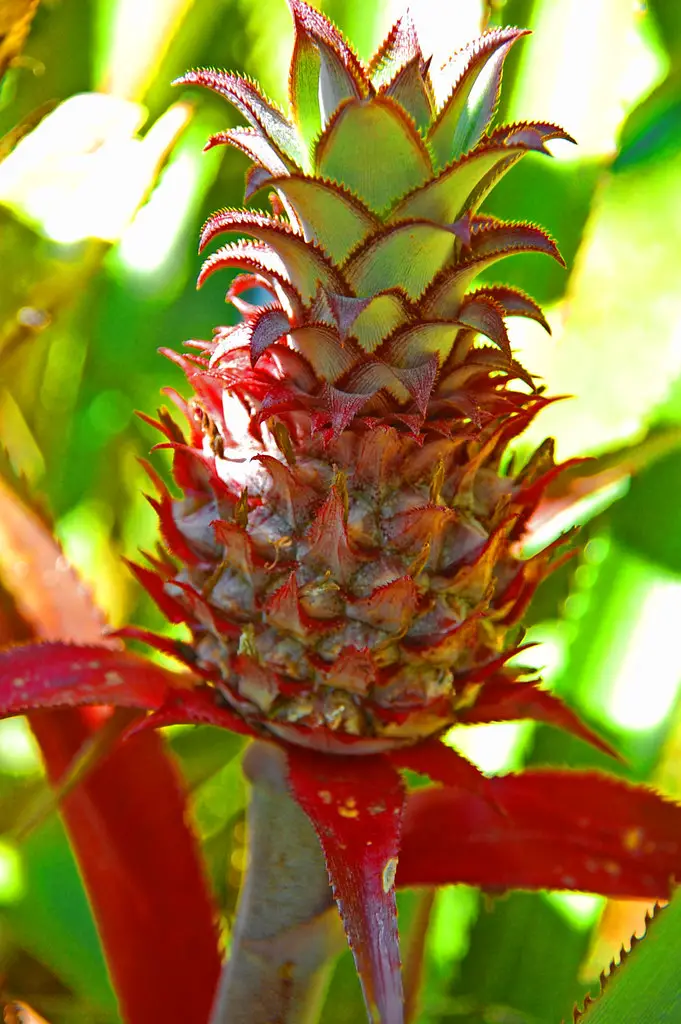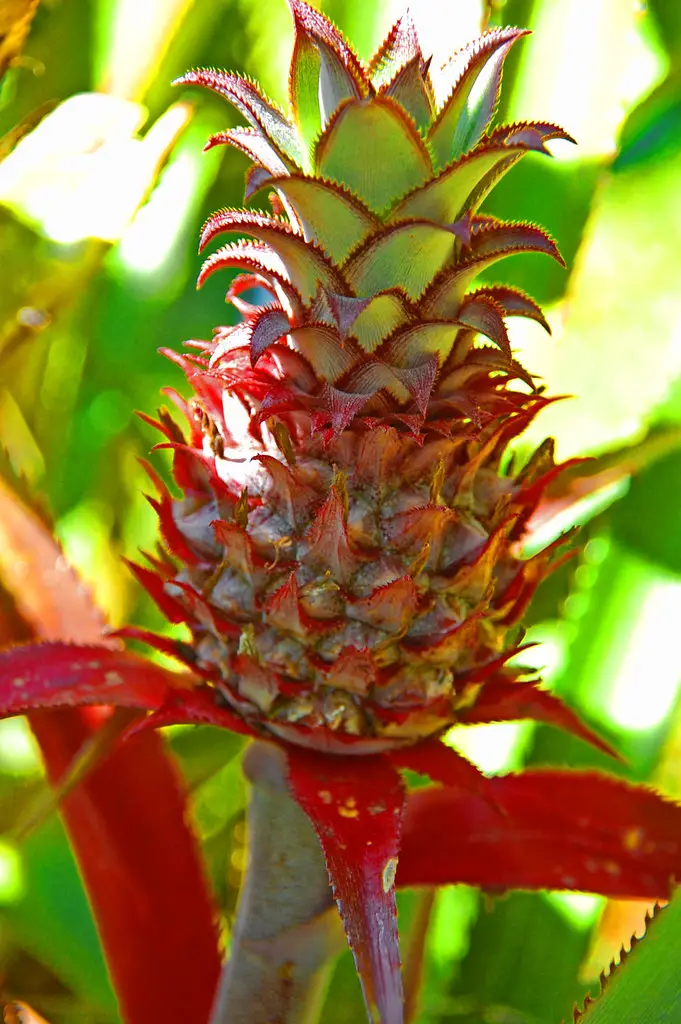Do Pineapple Grows Underground? Pineapples are a popular fruit that is grown widely in tropical regions of the world. However, if you’re someone that does not live in these regions you’ve probably never seen a pineapple being grown, so do pineapples grow underground?
Despite the prickly appearance and the little tuft on the top of the fruit which gives the impression that the pineapple could be produced underground it is in fact grown above ground on a small plant that is typically 2 to 3 ft tall and possibly even 4 ft when the plant is fruiting.
The plant is a member of the bromeliad family and produces a broad thick set of leaves that is similar to common plants like clivias. The pineapple itself is produced on a flowering stalk that appears at the centre of the plant. The flower is made up of numerous flowers that are red in colour.

These flowers form a distinct geometrical shape that is reminiscent of a pineapple early on. Each individual flower produces fruit that over time increase in size until they come into contact with the adjacent fruits in the cluster.
As the fruit develops the single individual fruits join together to create the larger pineapple. This process gives the distinct appearance that we all associate with pineapple on the outer skin. Cell like structures on the skin of the fruit is the remnants of the original smaller fruits.
About The Pineapple
The pineapple is a tropical fruit that originated in South America and is known to have been cultivated for thousands of years by the indigenous people of the region. However, the precise date at which the fruit was domesticated is unclear but there is archaeological evidence that suggests that the fruit was eaten for at least 3000 to 4000 years in this region of the world.
Due to its widespread consumption in this region, it was first discovered by Europeans when Columbus visited South America in 1493. However, it did not make it back to Europe until approximately 70 years later and at which point it slowly spread throughout that region.

In places like the UK it became a status symbol to grow and possess pineapples among the upper classes. As a result of this many victorian gardeners, were asked by their employers to grow pineapples under glass in the UK which they did so successfully though the cost of growing the fruit was excessively high and therefore it was only available to the upper classes of society at that point in time.
However, in the mid-19th Century mass production of pineapples was commenced in places like Hawaii and also the Caribbean which was sufficiently close to allow the fruits to be shipped into the UK at that time.
Growing Pineapple At Home
Even if you live in a very cold climate it is possible to grow pineapple plants indoors because they are relatively small and can be grown readily from the scraps of commercially purchased fruit.
To start your pineapple off you need to remove the top half an inch of the fruit which has the foliage attached to the plant Once this section of the plant is removed it needs to be allowed to heal for approximately 1 week. This process will reduce the chances of the plant rotting in the soil.
After this period of curing the plant can then be placed into either water or soil and then grown on. However, soil is preferable as there is less chance of the plant having disease problems. The base of the cutting should be planted at a depth of approximately half an inch to an inch in the soil with the foliage sitting upright in the pot.

To ensure that the plant develops roots relatively quickly the soil needs to remain moist for at least the first 2 months or so. However, after this period the frequency of the watering can be reduced as the plant will be able to tolerate short periods of dryness.
The plant will develop slowly and does need approximately 2 to 3 years to produce a flower and then fruit. However, one of the methods that does encourage the formation of flowering is to expose the plant to ethylene which can trigger this process.
Providing ethylene to the plant can be done by placing a ripening piece of fruit such as a pear or banana near the plant. However, if you want to increase the level of exposure you can temporarily cover the plant with a plastic bag which will increase the concentration of ethylene in the atmosphere around the plant.
Typically, if this process is successful the plant will begin to develop flowers approximately 2 to 3 months later.
The flower itself will start off red and progressively turn to a bluey-green color before changing colour again to a yellow or orange colour. The fruit should not be picked until the yellow-orange colour starts to appear on the skin as it will not ripen any further once picked.

Though if you do pick the fruit too early the skin will still change to the yellow-orange colour that we’re all familiar with, however, the flavour of the fruit will not improve as there is not an increase of sugars within it.
Once the pineapple has been picked the mother plant will often produce pups at the base of the plant which can be used to propagate further pineapples rather than having to rely on using the tops of store-bought plants.
It is a good idea to continue to keep the plant alive while it is producing these pups. However, once the plant is finished you are better off disposing of it and starting with a new plant as it is unlikely to fruit again.
I hope you found this article useful if you have any additional questions or comments please leave them in the section below.
Relevant Articles
What Are The Different Types Of Broccoli?
How Many Varieties Of Onions Are There?
Why Do Apple Seeds Grow Different Apples?
When Should I Plant Winter Vegetables?
